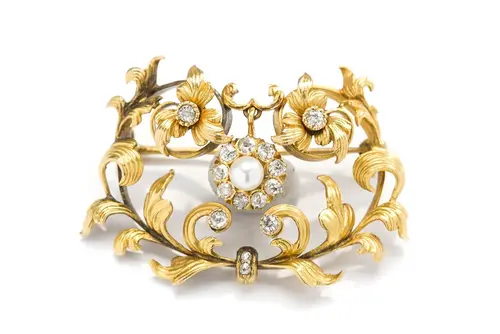


The timeframe of the Edwardian era is considered to be 1901 to 1910, this is when Edward VII was king of the United Kingdom of Great Britain. Neo-Baroque reigned in British architecture, academism in painting, jewellery changed from exuberant Victorian forms to more ethereal and delicate.
Despite its short duration, the Edwardian era deserves attention. The time from 1901 to 1910 was a period of important international change, which included, above all, society, science, technology and culture. Despite the many technological and social changes, painting (apart from the artists of the so-called Camden Town Group) retained a static and academic character. Notable painters included Sir William Rothenstein and Sir Samuel Luke Fildes (author of the representational portrait of King Edward VII).
British architecture of 1901-1910 was dominated by an appreciation of 18th-century French architecture. The public buildings - with their massive columns and elegant domes - were a tribute to Christopher Wren (English architect, including the designer of St Paul's Cathedral in London) and emphasized the dominance of the British Empire.
Due to the rapid development of the suburbs, terraced, semi-detached and detached two-storey villas began to appear in large numbers. Electric lighting and gas appliances gradually appeared in the houses, the windows had a larger surface area thanks to inexpensive glass.
Jewellery pieces of the Edwardian period were made using diamonds, pearls, platinum or coloured enamel. After the fancy Victorian forms more symmetrical arrangements started to reign, the symmetrical bow became a fashionable motif. Jewellers processed delicate and graceful rococo motifs, so stylized motifs of garlands and flowers appeared. Occasionally pastel-coloured precious stones also appeared.